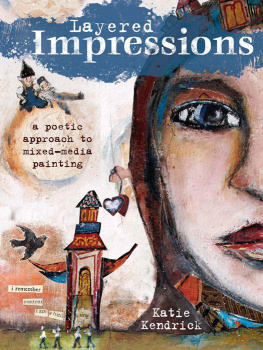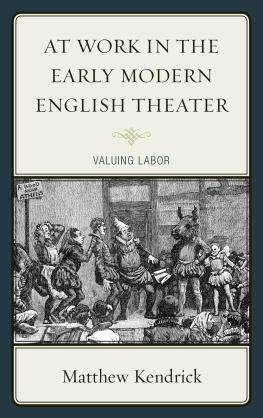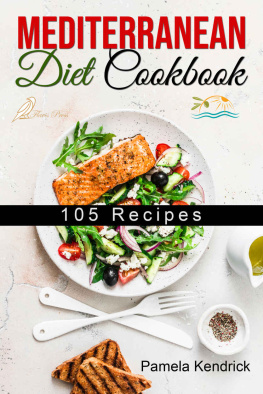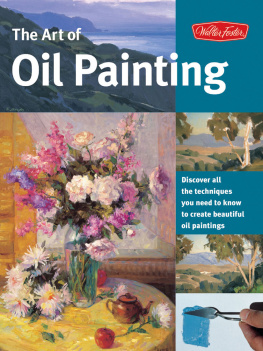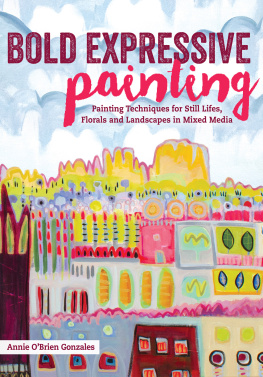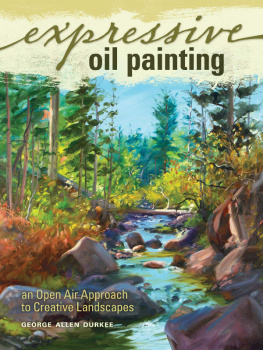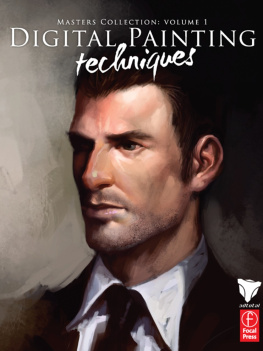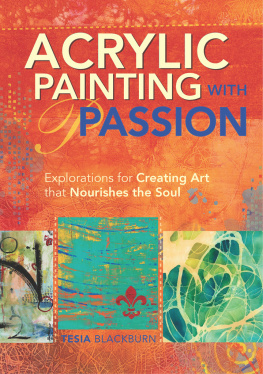Layered
Impressions
A Poetic Approach to Mixed-Media Painting
Katie Kendrick

Cincinnati, Ohio
www.createmixedmedia.com
Contents


The Poetry of Life and Art
I wrote this book as a way to share my creative process with others. One of my favorite things to do as an artist is to spend time with fellow artists and observe how they create, whether it be in a class, in the studio or through a book. We each approach the creative process in our own unique way, and there is much we can learn from one another. I hope that this book is a bit like taking a class with me, hearing my voice in the words and watching my hands move through the photographs as I lead you along, step-by-step.
Ive shared a variety of projects with you here, from flat paintings to three-dimensional artwork. Some of the pieces will call for a more intuitive approach, and in those cases I make some suggestions on ways to move forward and through possible obstacles along the way. Other projects are more straightforward and easily reproduced by following directions in each consecutive step.
For the painting projects, my goal is to demonstrate ways of seeing and creating, and to share specific techniques to aid in that process. In one project, youll create by working with contrast, using collage and paint to build and change facial features with light, medium and dark values. In another project, I demonstrate how to use your inspiration from another artists work to identify elements and moods to enhance your own creative process.
I will guide you as you create a mixed-media painting using tools other than your paintbrush; you will experiment with nondominant hand painting, finger painting and mark making.
Youll have instructions for making several different books using combinations of cardboard, plaster and encaustic medium. Youll learn how to make signatures using found and new materials, to create pages made of fabric and paper, and to combine a number of materials in a personal and meaningful way.
In one of the projects, youll use your own personal symbols as the focus of a mixed-media painting experiment, in the end extracting smaller sections of the painting and featuring them in a dimensional wall hanging, now pieces that hang, turn and swivel.
Youll have directions to make a soulful doll with a papier mch head, to hand paint a face and to sew a soft woolly body on it.
At the end of each project, you will find a Poetic Purposea giving back suggestion. Sharing your art, poetry and talent is a way for you to further expand the creative direction of each project, shifting the focus from creating for personal pleasure to sharing your creative spirit with family, friends and community. Random acts of kindness not only feel good, but are catching as well. By your own example, you touch the hearts of those around you, encouraging others to pay it forward. We can work together to create a kinder and more generous world.
My sincere hope is that you experience this book in the fullest intention it was created, that as you journey along through your art-making process, you experience more clarity and depth, and hear the sound of your own authentic voice more clearly. May you feel increasing moments of connection to the dynamic flowthe creative spirit that connects each of us to one another, and all of us to life.
Supplies to Gather
T here are some very basic supplies that you will use in all of the projects in this book, including palette paper (I make my own pad; see page 14), a water container and a paint clotha soft, used T-shirt is perfect for this. Some of the projects can get messy, so you might also want a pack of baby wipes and a roll of paper towels nearby. Having a few extra jars or small containers for mixing paint is a good idea, and since I dont usually wear latex gloves when I work (maybe you will), I wear a hand barrier cream sold in the art supply store. It protects my hands and makes cleaning much easier. Finally, you may want to cover your table with brown paper or plastic.
What follows are some specifics about the other supplies and tools well be using here and there throughout the book. While Ive mentioned my favorites, feel free to substitute your own and use whatever inspires you.
Substrates
I love using recycled surfaces for substrates, and some of my favorites include cardboard, matboard, foam core, wallpaper, heavy vintage record covers, book covers and heavy file folders. If its durable enough to take wet media, Ill use it. For new materials, I like 140-lb. (300 gsm) hot-press watercolor paper and printmaking paper.
Adhesives and Tape
Gel medium is what I reach for most as an adhesive; the matte variety is my preference. I recommend soft gel for gluing all collage papers, and heavy gel for heavier items. Elmers Glue-All is my PVA of choice, and I use Elmers Wood Glue when I need a stronger bond. When I need glue for fabrics, my favorite is Sobo fabric glue. Masking tape is my favorite tape, but I use painters tape when I tape over paint and need to remove it without taking the paint with it. Duct tape comes in so many colors now that I often use it inside my books.
Pens and Pencils
Out of all the pencils out there, I use a no. 2B and no. 6B most of the time. The lead in a 2B is harder and a bit lighter than a 6B, which is softer and good for shading. Any eraser will do for the projects, but my personal preference is a kneaded eraser. Another pencil Im very fond of is a black waxy pencil called a Stabilo All pencil because it will mark on a variety of surfaces and is wonderful for shading. It comes in other colors as well, but I stick mainly to the black and brown ones. I use colored pencils with both acrylic and oil, and have a large collection of Prismacolor pencils that I am fond of, but my absolute favorites are my set of Lyra Color Giant pencils, that are made in Germany. Another chunky favorite is a Lyra Graphite crayon.
Well use a charcoal pencil or a stick of charcoal for one of the projects, and well use both white and black gel pens frequently. (Make sure the ones you use work over acrylic paints.) My preferred brand is uni-ball. I use paint pens on fabric and paper, and my favorite brand is uni POSCA, the fine line type. This pen comes in a variety of colors.
Color
Acrylic
I use all types of acrylic paints. Craft paints are less pigmented and have a chalky look, and I use them when I want that effect. I like Golden Heavy Body Acrylics for blending flesh tones and use their Fluid Acrylics when I want a dilute paint-and-water wash. I use Golden Acrylic Flow Release, an additive, as a resist in one of the projects.
Oil and Pastels
Shiva Artists Paintstiks Oil Colors are a handy and portable way to use oils in a creamy form. Once you remove the outer self-healing skin, you can color directly with it, as you would a crayon, or cut off a little to use and mix on your palette.
PanPastel painting pastels, a kind of chalk pastel, come in their own little containers and a large number of colors. Water-soluble oil pastels are waxy and act as a resist when used with acrylics. Im not picky about branda cheaper student grade works for me here.
Next page
